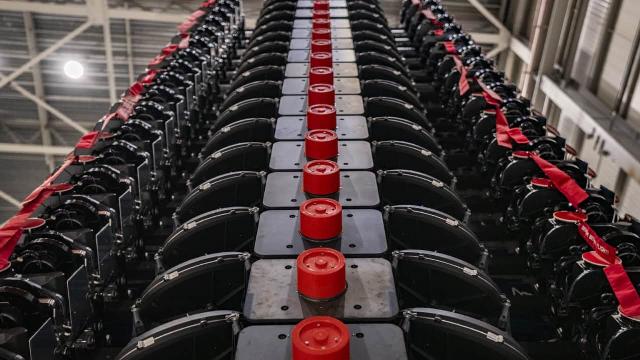The company that controls the bulk of satellites and the vast majority of human space flights unexpectedly spent $17 billion to buy back frequencies that could already fall into its hands in a few months. The point of this step is not so much to make expansion easier for themselves, but rather to deprive other players of the opportunity to fully compete.
Nine years ago, Elon Musk presented a plan for colonizing Mars, in which there was a big question mark about the sources of funding for the development of rockets for flights there. Jokingly, he even suggested such a source of funds for the project as "stealing underwear." To deal with the problem, Musk came up with a low—orbit global Internet access system - Starlink.
Before him, such a scheme was unrealistic, since an acceptable coverage requires a number of low-orbit satellites from thousands to tens of thousands. Before SpaceX, it was too expensive both in terms of launching into space and the price of satellites. Today, Musk's company already launches 250 satellites a month, has many millions of customers, and became profitable last year. But, from the businessman's point of view, this is not enough, so he decided to leave the satellite Internet segment for more extensive ones.
For now, the client needs a terminal ("plate"), and the main segment of content consumption these days is a smartphone. Therefore, in 2024, SpaceX conducted experiments on the direct connection of smartphones to the satellite, bypassing the mobile operator (Direct-to-Device). This market is much more capacious, but since Musk's company's entry there was, like the entire Starlink project, an improvisation, it happened when the main frequencies were already occupied: they were bought by EchoStar.
It is easier to purchase frequencies than to deploy a satellite constellation to service them. EchoStar could not cope with the second one, and SpaceX raised the issue of a "dog in the manger" with American regulators, demanding that EchoStar give up its frequencies since it could not use them. In recent months, the company has been preparing for bankruptcy.
Now Musk has taken a rather unexpected step by buying out the H-block and AWS-4 ranges (approximately 1.9-2.0 gigahertz) from EchoStar for $17 billion. In the United States, they are classified as 5G, but in terms of bandwidth they correspond only to modern LTE, which is well known to mobile Internet users. Their advantage is that from an altitude of 360 kilometers in this range, relatively decent video communication can be provided. Other frequencies are either already occupied or are less suitable for this purpose.

New Starlink Satellites
Image source: SpaceX
Industry observers noted that purely commercially, buying back the range now didn't make much sense. Getting $17 billion in profit from it in the coming years is unlikely. Starlink is not yet generating even a billion dollars in profit per year. But buying out the ranges in one block will not allow other players to occupy them — especially Apple, which has been thinking for a long time about creating its own C3 satellite constellation modeled on Starlink.
Apple faces a difficult dilemma: it will either have to cooperate with SpaceX by introducing support for new frequencies for communication without mobile operators into its phones, or wait for the appearance of Starlinkophone, which Apple has already publicly begun to fear. In the latter case, SpaceX may enter not only the mobile communication services market, including SMS and calls, but also the phone market. The past experience of Musk's companies clashing with other American players has shown that the latter cannot withstand direct competition of this kind.

